Subwassertang /round pellia moss (small pouch)
Original price was: ₹200.₹130Current price is: ₹130.
Description
Quantity: Small bunch in a pot/ small plastic pouch depending on stock availability.Picture is for reference only.actual quantity may varry depends on availability
Origin: East Asia
Light requirement: Low & Medium
Plant positioning: Foreground, On driftwoods, Rocks, etc.
CO2 requirement: Low & Medium
Plant difficulty level: Easy
Plant Propagation: cuttings
In India, we can sell this Subwassertang /round pellia moss aquatic plant via online delivery systems to any states including Andhra Pradesh, Arunachal Pradesh, Assam, Bihar, Chhattisgarh, Goa, Gujarat, Haryana, Himachal Pradesh, Jammu & Kashmir, Jharkhand, Karnataka, Kerala, Madhya Pradesh, Maharashtra, Manipur, Meghalaya, Mizoram, Nagaland,Odisha (Orissa), Punjab, Rajasthan,Sikkim, Tamil Nadu, Telangana,Tripura, Uttar Pradesh, Uttarakhand, and West Bengal.
Subwassertang
Common Name Subwassertang, Loma fern, Round Pellia, and False Round Pellia
Order Polypodiales
Family Lomariopsidaceae
Genus Lomariopsis
Species L. lineata
Subwassertang is a hardy plant and a close substitute for the renowned Java moss. The lush green cushions and beautiful form of Subwassertang make it an interesting addition to planted tanks especially shrimp tanks.
You will often notice shrimp hiding and roaming freely on its dense green foliage. It provides a lot of surface area for shrimp to graze and get on with the rest of their activities. Subwassertang is a bushy green plant, and it looks like seaweed. The round green leafy of the plant gives a natural look at your aquarium and fits well with any design. The surface area the plant provides is greater than any other moss we have seen, as it grows more like a leaf than typical Java moss. The plant can take a round shape like the one in the photo or spread throughout your aquarium. It does not have any root and can be floating or sink into your aquarium.
Planting and Propagation of Subwassertang
Planting Subwassertang is quite easy, and the interesting part is that it can take various artistic shapes and forms for an increased visual appeal. You can allow Subwassertang to be free-floating in the tank till it settles on a spot. Apart from that, you can get a bit creative and attach it to decorations like driftwood, rocks, and pipes.
Subwassertang sticks to surfaces like a small piece of wood with ease, all you need to do is to spread a little bit of Subwassertang on the piece of wood, tie the clumps with a black thread or fishing line all around it a couple of times, afterward, pass the thread through the loops to overlap all the area before you finally knot it. Attach divided pieces of Subwassertang to driftwood (shaped like a tree) to form a Süßwasser tree.
You can also stick small portions of Subwassertang into a crevice of wood or rock, this will make it look like it just happened to grow there naturally. Some hobbyists tie theirs to a mat/pad slate and place them on the substrate to form carpets, they find it easier to grow it that way than just placing it directly on gravel to root.
Another option is to attach clumps of Subwassertang to an acrylic ledge which is then held on the aquarium glass by suction cups. This will create an artistic illusion of plants floating in your aquarium. Subwassertang propagates by division. To propagate Subwassertang in tanks, simply break off small portions of it, attach it to a hardscape and it will grow into a whole new plant. Make sure to disinfect Subwassertang in a bleach or salt dip before placing it into the tank. This helps to eliminate the chances of unwanted pests and snails being introduced into your tank.
Requirements
• Temperature: It grows best in the temperature range of 68 °F to 75 °F (20 – 24 °C). In nature, it can thrive in cold temperatures.
• pH: The plant will appreciate the pH between 6.0 – 8.0.
• Water Hardness: Even though Subwassertang can tolerate a wide range of water hardness. It still prefers soft water; this could be in the range of 0 – 8 dGH.
• Lighting: Ideally, medium lighting is required, this will result in more yield and an increase in its growth rate. Subwassertang will also grow well in low lighting conditions, however it comes at an expense which is a slightly slower growth and dull appearance. Nonetheless, even under low light bottom leaves will be OK.
• CO2 and Fertilization: CO2 injection is not necessary for this plant’s growth although it can increase the growth rate a little bit. Subwassertang will do just fine without the application of liquid carbon and fertilizers.
Subwassertang as an aquarium plant
Subwassertang is an extremely popular aquatic plant commonly used in planted aquariums that resembles seaweed. Although this peculiar plant looks like a moss or liverwort, it is neither and is most closely related to Lomariopsis Lineata. Subwassertang is very hardy and will tolerate a wide range of aquarium parameters and water conditions. This bulletproof nature makes it a wonderful choice for beginner aquarists who are interested in keeping live plants for the first time. Subwassertang can be commonly spotted in shrimp tanks and breeding project tanks since it provides an ideal environment for young fry.
n
Only logged in customers who have purchased this product may leave a review.


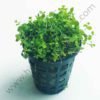


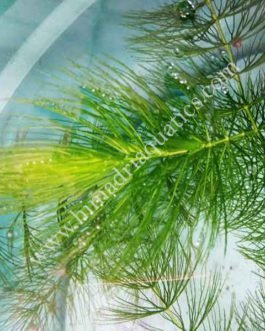
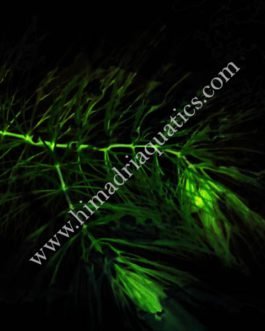
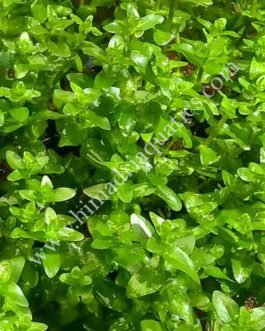
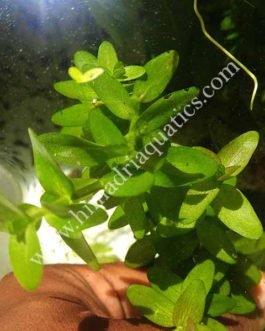
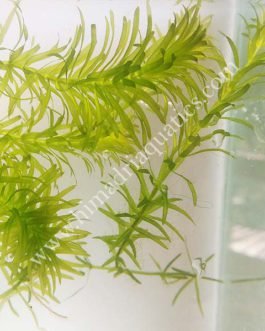
Reviews
There are no reviews yet.